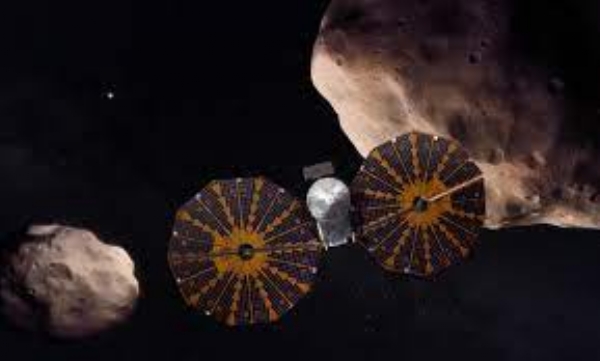Mission Exploring Jupiter's Asteroids: NASA set to launch Lucy mission next month
Lucy is the first spacecraft designed to visit and observe these asteroids, which are remnants from the early days of our solar system.
Total Views |
Florida, September 29: In the major development, US space agency the National Aeronautics and Space Administration (NASA) is all set to launch its first spacecraft to study Jupiter's Trojan asteroids next month.

According to NASA, the Lucy mission has passed all of its prelaunch tests and is set to leave Cape Canaveral Space Force Station at around 5:30 a.m. ET on October 16.
NASA said, " It has tested the functions of Lucy, a planned NASA space probe that will complete a 12-year journey to seven different asteroids, filled it with fuel, and is preparing to pack it into a capsule for launch on Saturday, October 16."
Also Read | Fostering Research and Development! IIT Delhi sets up centre of excellence on Quantum Technologies
"With Lucy, we're going to eight never-before-seen asteroids in 12 years with a single spacecraft," said Tom Statler, Lucy project scientist at NASA Headquarters in Washington. "This is a fantastic opportunity for discovery as we probe into our solar system's distant past.
About the Lucy:-
Lucy is the 13th mission in NASA's Discovery Program. The mission is named after characters in Greek mythology, these asteroids circle the Sun in two swarms, with one group leading ahead of Jupiter in its path, the other trailing behind it.
Lucy is the first spacecraft designed to visit and observe these asteroids, which are remnants from the early days of our solar system. The mission will help researchers effectively peer back in time to learn how the solar system formed 4.5 billion years ago.
Lucy's main science targets are Trojan asteroids, space rocks that loop around the sun in Jupiter's orbit. There are two groups of Trojans: one that "leads" Jupiter around our star and one that "trails" the giant planet.
Over 12 years, Lucy will travel nearly 4 billion miles (6,437,376,000 kilometers) moving at about 400,000 miles per hour (17,881.6 meters per second). Lucy will use three science instruments to study the asteroids, including color and black-and-white cameras, a thermometer, and an infrared imaging spectrometer to determine the composition of the asteroids' surface materials. The spacecraft will communicate with Earth using its antenna, which also can be used to help determine the masses of the asteroids.
Lucy's 12-year mission could also help scientists learn how our planets ended up in their current spots.
.
.